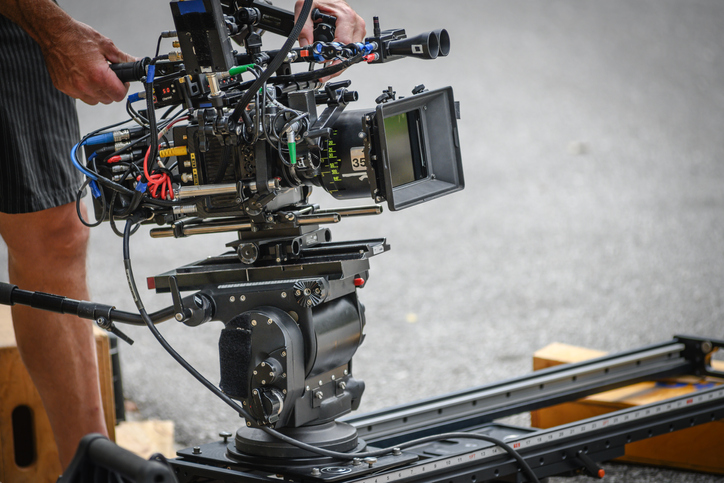Aspect Ratio in Filmmaking – Filmmaking is not just all about purpose, concept, creation, production, and direction. There are numerous other technical details and matters involved in the process that are unknown to the general public or viewers. However, the audience often rates the presentation on the basis of these elements in lay terms. In other words, the audience is not aware of the functional and professional terms, but they can sense the elements and one such element is the aspect ratio.
What is the Aspect Ratio?
Aspect ratio is the size of the image or scene screen in layman terms. It represents the width vs. height resolution of the scene on the screen. The audience may not be able to tell the ratio of a particular scene, but films projects with higher aspect ratios often have to share deeper insights and have a significant impact on the viewers. So developing comprehensive knowledge about aspect ratios is more than critical for filmmakers.
Keep scrolling down this article to explore and learn all you need to know about aspect ratio in filmmaking.
Top 7 Types of Aspect Ratio Aspiring Filmmakers Should Know
The aspect ratio of any film or other project impacts the quality of the picture and its representation on the screen. Most people might not be able to tell the difference; however, it is the representation of the skill and expertise of the filmmakers, which sets higher standards and expectations of the viewers too. Therefore, taking care of such little details in film projects is necessary.
Here are some of the major types of aspect ratios in filmmaking aspiring filmmakers should know about to make more impactful film projects.
1. 4:3 or 1.33:1 (Academy Aperture)
4:3 or 1.33:1, often termed as academy aperture, is one of the first and oldest aspect ratios in filmmaking that was used in the films. This ratio significantly highlighted the artistic purpose of the filmmakers and is now considered the classic ratio that represents the old school era. The modern filmmakers interested in giving their films an older classic look often consult film production Dubai experts and take guidelines for particular aspect ratio that gives desired look to their project.
2. 16:9 (High Definition Widescreen)
16:9 is the high-definition widescreen aspect ratio which is perfect for giving a cinematic look to the scenes. This is the aspects ratio that is widely used in video content across the globe, and viewers follow to stream video projects on different platforms. So, if you are thinking about making a film for a wider audience outside of the theater, this is the perfect aspect ratio.
3. 1.85:1 (American Widescreen)
Another significant aspect ratio that modern filmmakers should know about is 1.85:1, which is often termed as American widescreen too. This aspect ratio appears with black bars on top and bottom of the screen. This ratio is commonly used for feature film projects, and other projects wanting a cinematic look go for this aspect ratio.
4. 2.39:1 (Anamorphic Widescreen)
2.39:1 aspect ratio, commonly known as anamorphic widescreen, is the widest ratio in modern cinema. This type is perfect for capturing scenic landscapes that give an aesthetic and dramatic look to feature films. So, if you are planning to make a road film project, an anamorphic widescreen aspect ratio is the best option that will add to the visual appeal of your project.
5. 2.76:1 (70mm)
2.76:1 aspect ratio, commonly termed as 70mm, is also one of the classic aspect ratios that were used in Hollywood films. This particular ratio is specifically for the theatrical representation, so if you are doing a project for theatrical presentation, this is the aspect ratio that will attract your audience as they cannot experience the quality and presentation on the usual television screen.
6. 1.37:1 (Academy Ratio)
If you are into contemporary filmmaking, then the 1.37:1 aspect ratio, also termed as academy ratio, should be your go-to choice. This particular aspect ratio is slightly wider than the other older ones, so it reigned high over the industry during the silent film era. If you are also impressed and inspired by that era and want to follow, you know what you have to do.
7. 2.35:1 to 2.66:1 (Cinemascope)
2.35:1 to 2.66:1, termed as cinemascope, was considered as the super widescreen format, which was invented in the second half of the twentieth century. The invention of this aspect ratio added more depth and detail to the film presentations and has been used widely since then. If you are also interested in exploring this or other aspect ratios, consult film production experts and make sure to give a picture-perfect presentation to your projects.
Need technical assistance to set aspect ratio in filmmaking?
There is a stark difference between verbal knowledge and technical skill or expertise. Getting verbal know-how of aspect ratio is not enough to implement it, and you will need expert guidance for that. So, make sure to consult the professionals to gain technical assistance and ensure a catchy and attractive look for your film projects.
Read also: How to Incorporate Videos in Your E-commerce Platform?

